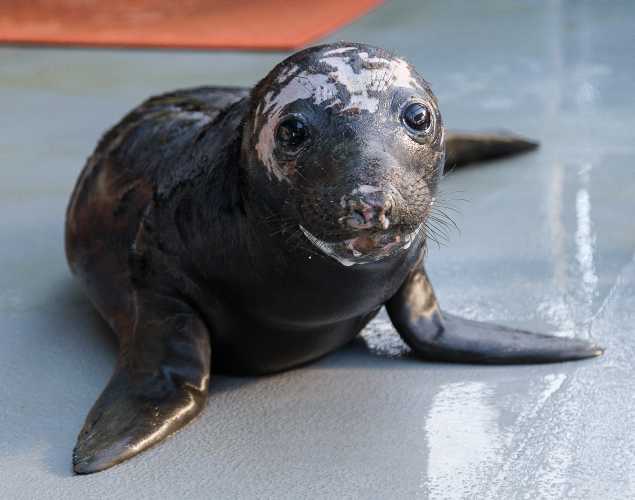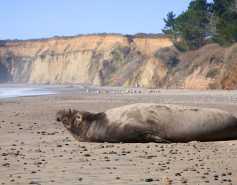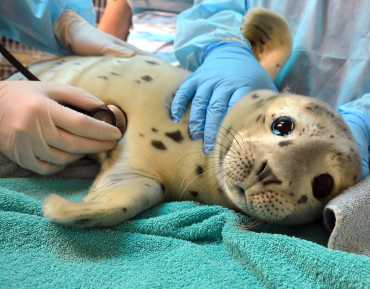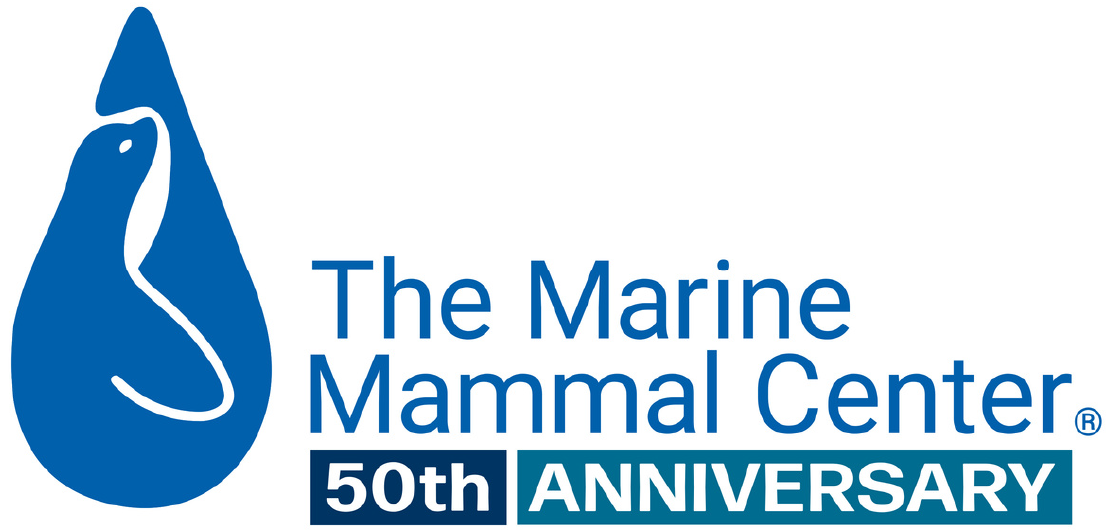
El Niño Storms Could Wreak Havoc on Pinniped Pups
- Malnutrition
- Climate change
High winds and rough surf are likely to blame for the stranding of our first pup of 2016, elephant seal Januellie.
Climate experts say the strong El Niño climate pattern we’re currently experiencing has already produced significant global impacts, and is likely to continue to affect temperature and precipitation patterns for the next few months.
Forecasters with the National Oceanic and Atmospheric Administration (NOAA) have even said that this El Niño could eventually rank among the strongest on record, and may be getting an additional boost from another climatic phenomenon that is known to increase storminess.
Along the California coast, we are seeing the effects of what some have dubbed the “Godzilla El Niño” in the form of frequent storms, heavy rains, strong winds and rough surf. And here at The Marine Mammal Center, these dangerous coastal weather conditions often cause an influx in young pup patients as well.
This time of year, young elephant seals and harbor seals are born on beaches up and down the California coast, and these pups stay on the beach while their mothers nurse them for about a month. But when heavy storms roll in, these pups can be washed off the beach by hazardous surf.
The greatest threats to marine mammals are caused by people, but we can also be their greatest champions.
Sign up for email from The Marine Mammal Center to stay updated on how you can be an advocate and champion for marine mammals like northern elephant seals.
Major storm events, such as those we often see during El Niño years, can be significant causes of mortality for elephant seals in their first year of life, says National Park Service ecologist Sarah Allen.
If a storm is strong enough, entire beach areas can erode and disappear, forcing mother seals and their pups to find another spot to haul out. Once out at sea, the pups are not strong enough to swim on their own and can easily get separated from their mothers.
The lucky pups that survive a rough storm may wash up on nearby beaches in need of a helping hand. Our animal care experts suspect this may be what happened to our first pup of 2016, a northern elephant seal we’ve named Januellie—a mash-up of “January” and “ellie,” an abbreviated nickname for elephant seals.
On January 20, Januellie was found alone on a beach near a known northern elephant seal haul-out area in Point Reyes National Seashore. When she was rescued, she had abrasions on her face and flippers, indicating that she may have been tossed around in the rough surf along the rocky coastline.
Aside from these pinkish, hairless spots on her face, Januellie is covered in a dark, velvety fur called a “lanugo coat,” which she’s had since birth. Elephant seals maintain this coat for about a month as they are nursing with their mothers. After weaning, they begin to shed this black coat to reveal a sleek, silver-gray coat. Within a year, the coat will turn silvery brown.
Januellie’s black coat and the tooth buds our veterinary experts spotted during her admit exam tell us that she was about three weeks old when she was rescued, which is too early for her to be separated from her mother.
In fact, the first day she was allowed into one of our pools, Januellie ventured into the deep end and began to struggle while trying to swim on her own. Although she eventually made it back to the shallow end, she was unable to climb out and had to be rescued by one of the trained volunteers supervising her pool time.
Learn More About Our Seal Pup Patients
{"image":"\/Animals\/Wild\/Elephant seal\/elephant-seal-bull-shutterstock.jpg","alt":"northern elephant seal bull laying on beach","label":"Pinnipeds","title":"Northern Elephant Seal","link_url":"\/animal-care\/learn-about-marine-mammals\/pinnipeds\/northern-elephant-seal","type":"page"}

{"image":"\/Animals\/Patients\/Elephant seals\/2018\/cropped-images\/es-juanita-by-bill-hunnewell-c-the-marine-mammal-center-186-2-2203-1721-1604510579.jpg","alt":"Elephant seal Juanita","title":"Fish School","link_url":"https:\/\/www.marinemammalcenter.org\/publications\/fish-school","label":"Online Learning Resource","type":"publication"}

{"image":"\/Animals\/Patients\/Releases\/nfs-lilypad-release-photo-c-gary-wang.jpg","alt":"northern fur seal pup looks out at the ocean","label":"Animal Care","title":"Patient Journey","link_url":"\/animal-care\/patient-journey","type":"page"}

{"image":"\/Animals\/Patients\/Elephant seals\/2021\/cropped-images\/es-stoffle-before-rescue-photo-c-isabel-staples-0-482-1152-899-1612368190.jpg","alt":"elephant seal pup Stoffle","title":"Elephant Seal Survival","link_url":"https:\/\/www.marinemammalcenter.org\/publications\/elephant-seal-survival","label":"Online Learning Resource","type":"publication"}

Because Januellie would still be nursing with her mother at this age and doesn’t have the teeth necessary to eat whole fish, she is currently being fed what we call a “fish smoothie,” which is made from mashed-up herring, salmon oil and water. Pups like Januellie are tube-fed this fishy formula during feedings throughout the day and evening.
When our veterinary experts determine that Januellie is ready to progress to solid food, our animal care volunteers will begin daily sessions of “fish school” to get her interested in eating whole fish. During fish school, volunteers drag fish on a string through the pool or offer them by hand until the pups learn that fish is for eating.
Once Januellie gets the hang of eating fish, she’ll have to learn how to forage on her own and compete for fish with other animals. When she’s strong enough to survive on her own, she’ll be released back into the wild to get a second chance at life.
As mother seals continue to give birth to pups like Januellie along the California coast, it’s important to remember that the best thing you can do for these animals is to leave seals be by keeping your distance and alerting the experts if you see a seal in distress. For marine mammals along the California coast from Mendocino County to San Luis Obispo, call The Marine Mammal Center’s hotline at 415-289-SEAL (7325).
You Can Be a Marine Mammal Hero
Generous people like you help provide the critical care that pups like Januellie need to be successfully returned to their ocean home. Your support goes a long way to help all of our pinniped patients get a second chance at life.
Yes, I want to save a life!

Yes, I want to save a life!
You’ll be giving sick and injured animals the best possible care at the Center’s state-of-the-art hospital. With your gift today, you are giving a patient a second chance at life in the wild.
See Our Latest News
{"image":"\/Animals\/Patients\/Hawaiian monk seals\/2025\/cropped-images\/d-ru28release-exam-at-ke-kai-ola111025photo-by-giancarlo-rulli-c-the-marine-mammal-center-noaa-permit-24359-0-0-1270-992-1764620886.jpg","alt":"","title":"Bird Flu Vaccine Trial Offers Hope for Protecting Hawaiian Monk Seals","link_url":"https:\/\/www.marinemammalcenter.org\/news\/bird-flu-vaccine-trial-may-offer-hope-for-protecting-hawaiian-monk-seals","label":"News Update","date":"2025-12-01 08:13:00"}

Bird Flu Vaccine Trial Offers Hope for Protecting Hawaiian Monk Seals
December 1, 2025
Read More{"image":"\/Animals\/Patients\/Hawaiian monk seals\/2021\/hms-pp08-by-sheila-latta-c-the-marine-mammal-center-noaa-permit-18786.jpg","alt":"Hawaiian monk seal","title":"The New York Times: Inside the Bird-Flu Vaccine Trial for Monk Seals","link_url":"https:\/\/www.marinemammalcenter.org\/news\/the-new-york-times-inside-the-bird-flu-vaccine-trial-for-monk-seals","label":"In the News","date":"2025-12-01 01:00:00"}

The New York Times: Inside the Bird-Flu Vaccine Trial for Monk Seals
December 1, 2025
Read More{"image":"\/Animals\/Wild\/Sea otter\/so-wild-morro-bayphoto-c-brian-simuro-20.jpeg","alt":"Sea otter and pup","title":"Watch a Sea Otter Pup Reunite With Its Mother","link_url":"https:\/\/www.marinemammalcenter.org\/news\/watch-sea-otter-pup-reunite-with-its-mother","label":"News Update","date":"2025-11-14 10:35:41"}

{"image":"\/Animals\/Wild\/Sea otter\/sea-otter-photo-c-brian-simuro.jpeg","alt":"Sea otter","title":"AP News: Baby sea otter is reunited with mother in central California after dramatic rescue","link_url":"https:\/\/www.marinemammalcenter.org\/news\/ap-news-baby-sea-otter-is-reunited-with-mother-in-central-california-after-dramatic-rescue","label":"In the News","date":"2025-11-14 09:46:34"}

AP News: Baby sea otter is reunited with mother in central California after dramatic rescue
November 14, 2025
Read Moreclimate change
Northern Elephant Seal
